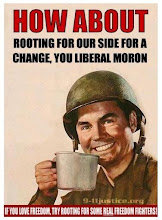I am not an Economist/Banker/Investment Professional. Having said that, let me take a stab at offering a solution to the current market instability problem.
Banks are not willing to lend to each other because they do not know who will survive the weekend. Some analysts envision a possibility that 100-150 could fail in the foreseeable future. But, rather than simply infuse $700B into the system by lending U.S taxpayer money to buy problem loans, might I suggest that the Treasury set up a “distressed fund” (sometimes referred to as a “vulture investment fund”) with the money in which these firms can negotiate for the capital they need and the investment fund (read: “taxpayer”) gets “convertible preferred stock w/ some percentage coupon” (similar to the deal Warren Buffett recently made with Goldman Sachs). Thereby, we the people are getting a preferred equity position that allows taxpayers to be paid interest each period while they wait for the companies to increase their equity value at which point the government will do a public offering and the taxpayers will enjoy the proceeds along with the management of the organization.
Given that total Credit Market Debt as a percentage of GDP is currently 348.5%, and Household Income to Debt = 102%, everybody is at the limit. Consumers are maxed out and in total the financial service system is essentially insolvent (total liabilities exceed total assets), so just throwing money into the system without a structure that is understood by all the participants risks could be catastrophic.
“The bankers are scared and the government is in the driver’s seat on this thing”. We have the opportunity to both stabilize the system and extract our (the taxpayers) “pound of flesh” if we give them a reasonable offer. We can reinstate the greed/fear equilibrium back into the model, or a carrot and stick, whatever you want to call it, and protect the taxpayer. Remember now, only 25% of America supports a "bail-out" of these knuckleheads.
Once the “Distressed Fund” is established, we suggest the government hire an “investment banker” to execute the distributions and build an incentive plan to get the “smart people who know how to do this to do it” – which may mean hiring back some of the knuckleheads that created this mess to unravel it – but with the ability to set compensation that might reward performance (say, stock options in the “new company”) that can be exercised only once the taxpayer is made whole and the new company goes “public” again. Governments around the world are clients of these big investment banks, so there is nothing new here. They know how to do it.
Additionally, if we, the taxpayer, are going to "buy" assets it should not be just the junk but a position in the whole company so the taxpayer does not get left holding the bag. The other benefit is that it might soften the impending failure of non-financial corporations, which would create a spike in unemployment and a further contraction in the economy.
In any event, the policy decisions made after the crisis management phase will be equally critical to the decisions made during this crisis management phase. While recessions are a necessary part of the economic model, the government (remember the CRA?) and the Fed have artificially “softened” these recessionary periods since 1990-91 and the result has been the excesses we are experiencing now. With essentially free money, the tech bubble and the mortgage crisis were inevitable. Therefore, if I understand it, managing the recession correctly will allow for the necessary “cleansing of the system” without reaching near-catastrophic levels not seen since 1973-74.
As a comparison, the 1929 crash resulted in an approximately 25% contraction of GDP, approximately 25% unemployment, and some 14,000 banks failed (We can check with Ben Bernancke’s office for specifics, he apparently is the world’s leading expert on the Crash/Depression). 1973-74 it was approximately a 4-5% contraction in GDP, something like 10 or 11% unemployment, and not nearly the catastrophic bank failures of the 30's. Today, we have 6% unemployment, and we'll lose a couple hundred banks, and it remains to be seen what happens to GDP. We are going to be somewhere north of that 4% number of 1973-74. The question is: How far North?
In any case, there is no need to rush into a $700B deal without really knowing what the heck we're getting ourselves into. Japan in the '90s ... anyone? Buehler? If Wall Street thinks Washington doesn't understand it, and Washington thinks that Wall Street doesn't get it; What makes them think they can sell it to Main Street?
Let's take a deep breath. Let's stop trying to boost ratings and circulation by making comparisons to the Great Depression. Let's let the markets work and put the taxpayers money in where and when it will make the biggest difference. We're America. We can do it.










No comments:
Post a Comment